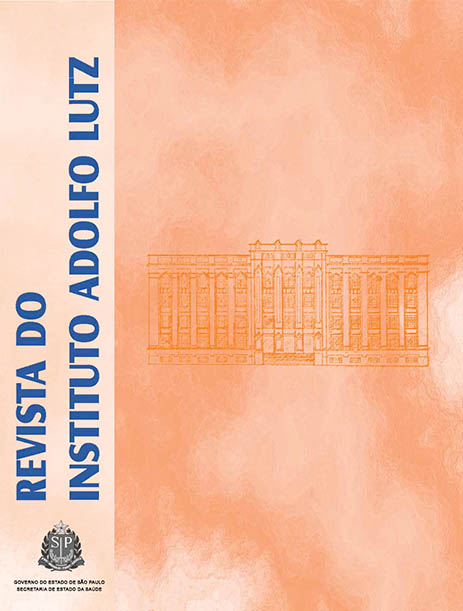Abstract
The purpose of this study was to develop a formulation for preparing low-caloric, sugar-free and high fiber contents-containing cakes, in order to obtain a light, diet food and with functional properties. The percentages of added polydextrose and emulsifier for replacing the fat were established by Response Surface Methodology. Inulin was added as a source of fiber in the proportions of 6, 12, 18 and 24%. The products were evaluated on raw dough specific density, specific volume, cakes acceptance and appearance. The formulation with 100% fat replacement and 1.5% emulsifier addition showed the highest attributes ranks and calorie reduction was around 30% and being classified as light food. This formulation can be further classified as “food with low fat” because the total fat contents was lower than 3 g/100 g of product and as “diet” food due to the absence of sucrose in its preparation. Enrichment of light/diet formulation with 18% inulin resulted in a product containing high fiber contents (7.44 g/100 g). The final cake product is a healthy and tasty food which might be included in diet of consumers with special needs and those who care for health
References
1. Astrup A. Healthy lifestyles in Europe: prevention of obesity and type II diabetes by diet and physical activity. Public Health Nutr. 2001; 4(2B):499-515.
2. Benasi VT, Watanabe E, Lobo AR. Produtos de panificação com conteúdo calórico reduzido. Bol CPPA. 2001;19(2)225-42.
3. American Dietetic Association - ADA. American Dietetic Association Reports. Position of the American Dietetic Association: functional Foods. J Am Diet Assoc. 2009;109(4):735-45.
4. Lucchese T, Batalha MO, Lambert JL. Marketing de alimentos e o comportamento de consumo: proposição de uma tipologia do consumidor de produtos light e ou diet. Org Rur Agroind. 2006;8(2):227-9.
5. American Dietetic Association - ADA. Position of the American Dietetic association: fat replacers. J Am Diet Assoc. 2005;105(2):266-75.
6. Hicsasmaz Z, Yazgana Y, Bozoglua F, Katnas Z. Effect of polidextrose substitution on the cell structure of the high-ratio cake system. Lebensm Wiss U Technol. 2003;36(4):441-50.
7. Roberfroid MB. Introducing inulin-type fructans. Braz J Nutr. 2005; 93(Suppl 1):S13-25.
8. Moscato JA, Prudêncio-Ferreira SH, Hauly MCO. Farinha de yacon e inulina como ingredientes na formulação de bolo de chocolate. Cienc Tecnol Aliment. 2004;24(4):634-40.
9. Madrigal L, Sangronis E. La inulina y derivados como ingredientes claves em alimentos funcionales. Arch Latinoam Nutr. 2007;57(4):387-96.
10. Hauly MCO, Moscatto JA. Inulina e Oligofrutoses: uma revisão sobre propriedades funcionais, efeito prebiótico e importância na indústria de alimentos. Semina. 2002;23(1):105-18.
11. Saad SMI. Probiotics and Prebiotics: the state of the art. Rev Bras Ciênc Farm. 2006; 42(1):1-16.
12. Seyhun N, Sumnu G, Sahin S. Effects of different emulsifier types, fat contents, and gum type on retardation of staling of microwave-baked cakes. Nahrung. 2003;47(4):248-51.
13. Turola LN. Desenvolvimento de bolo diet enriquecido com fibras: otimização do produto por meio de testes sensoriais afetivos [dissertação de mestrado]. Campinas (SP): Faculdade de Engenharia de Alimentos da Universidade Estadual de Campinas; 2002.
14. Zambrano F, Hikage A, Ormenese RCC, Montenegro FM, Raun-miguel AM. Efeito das gomas guar e xantana em bolos com substitutos de gorduras. Braz J Food Technol. 2005;8(1):63-71.
15. Pavanelli AP, Cichello MS, Palma EJ. Emulsificantes como agentes de aeração em bolos. [acesso 2010 Mar 2003]. Disponível em: [http://www.oxiteno.com.br/mercados/doc/documentos].
16. STATSOFT. Statistica for Windows: computer program manual. Tulsa: StatSoft; 1995.
17. Karaoglu MM, Kotancilar HG, Celik I. Effects of utilization of modified starches on the cake quality. Starch. 2001;53(34):162-9.
18. Minim VPR. Análise sensorial: estudos com consumidores. Viçosa: UFV; 2006.
19. Association of Official Analytical Chemistry – AOAC. Official methods of analysis of AOAC international. 18ª ed. Gaitherburg; 2005.
20. Nelson NA. A photometric adaptation of the somogy method for the determination of glucose. J Biol Chem. 1944;153:375-80.
21. Brasil. Ministério da Saúde. Secretária de Vigilância Sanitária. Portaria nº41, 14 de janeiro de 1998. Aprova o regulamento técnico referente à rotulagem nutricional de alimentos embalados. Diário Oficial [da] República Federativa do Brasil, Brasília, DF, 21 jan. 1998.
22. Candido LMB, Campos AM. Alimentos para fins especiais e dietéticos. São Paulo: Varela; 1996.
23. Borges JTS, Pirozi MR, Della Lucia SM, Pereira PC, Fialho e Moraes AR, Castro VC. Utilização de farinha mista de aveia e trigo na elaboração de bolos. Bol CPPA. 2006;24(1):145-62.
24. Raninen K, Lappi J, Mykkänen H, Poutanen K. Dietary fiber type reflects physiological functionality: comparison of grain fiber, inulin and polydextrose. Nutr Rev. 2011;69(1):9-21.
25. Valencia GFE, Millán CLsJ, Estepa ECM, Botero TS. Efecto de la sustitución con polydextrosa y CMC en la calidad sensorial de tortas con bajo contenido de sacarosa. Rev. Lasallista Investig. 2008;5(2):62-7.
26. Ferreira EF, Chang YK. Bolo funcional com raiz de chicória como fonte de fibras e inulina. Faculdade de Engenharia de Alimentos – FEA e Faculdade de Engenharia Agrícola – FEAGRI, UNICAMP. X Congresso interno de iniciação científica da UNICAMP. Set.,2002. [acesso 2009 Ago 18]. Disponível em: [http://www.prp.unicamp.br/pibic/congressos/xcongresso/pdfN/278.pdf ].
27. Benasi VT, Watanabe E, Lobo AR. Produtos de panificação com conteúdo calórico reduzido. Bol CPPA. 2001;19(2):225-42.
28. Brasil. Ministério da Saúde. Portaria nº 27, 13 de janeiro de 1998. Aprova o regulamento técnico referente à informação nutricional complementar. Diário Oficial [da] República Federativa do Brasil. Brasília, DF, 16 jan. 1998.
29. Brasil. Ministério da Saúde. Secretaria de Vigilância Sanitária. Portaria SVS nº 29, 13 de janeiro de 1998. Regulamento técnico para fixação de identidade e qualidade de alimentos para fins especiais. Diário Oficial [da] República Federativa do Brasil. Brasília, DF, 13 jan.1998.
30. Pereira CA, Lopes MLM, Coelho, AIM, Campos MTFS. Alimentos light e diet: informação nutricional. Viçosa: Universidade Federal de Viçosa - UFV; 2003.

This work is licensed under a Creative Commons Attribution 4.0 International License.
Copyright (c) 2011 Instituto Adolfo Lutz Journal
